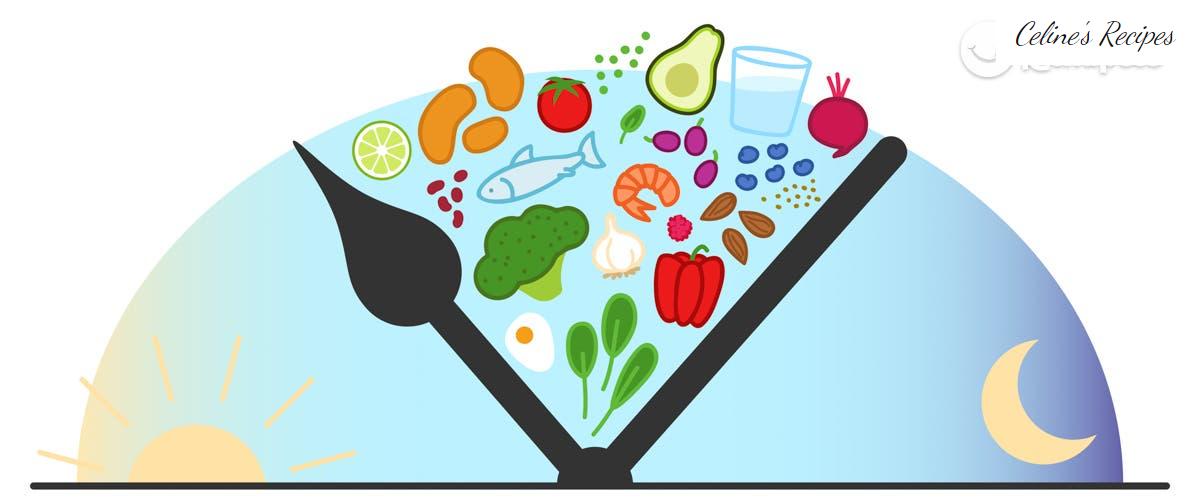Intermittent fasting, is it as good as they say?
Somehow, you’re already fasting. Unless you get up to “rob” the fridge every now and then, while you sleep, you’re already doing it. Because fasting is a period without eating food, without more.
But now it is very fashionable and appears in the headlines constantly, why?

Fasting The new fashion of a lifetime
Although now booming, fasting has always been related to human history. Men and women we have fed when we have been able and when we needed it.
Going to the supermarket or to the corner store is not the same as going hunting or eating what you may have accumulated at harvest time. So it has always been present.
There is more, voluntary abstinence from food for short periods is much more natural than you think . Children and babies are inappetent when they are sick.
When we sleep, we also go a few hours without eating. When they have to do a certain blood test you do 8 to 12 hours of fasting, without problem.
But also, all humans instinctively try to find moments to recharge energy and “reset” the body from time to time, as if it were a computer.
In fact, when you spend with meals, for example at Christmas, there comes a time when you want to “detoxify” and you want to eat lighter or simply skip a meal. And remember this concept, because it is closely related to the new boom in food abstinence.
Fasting has been part of the culture
But there is more, because fasting has been part of the culture of various civilizations and religions. There are many references in the bible. In fact, Lent is originally related to the prohibition of eating certain foods for a time in order to purify the body.
The same is true of Judaism, Islam, Buddhism, Hinduism, Jainism. They all have rites related to the theme.
And beyond the spiritual cults, the most intellectual as Aristotle, Socrates, Hippocrates, Plato and Galen preached the advantages of fasting.
The ancient Egyptians, Mayans, Incas and Aztecs … Even the 13th century knights had an initiation rite that included a fast night to be “purified” when they were accepted.
So it has always been with us, but the boom that we are seeing in the media and is gathering strength in the consultations of nutrition professionals, is related to the tendency to return to the roots and eliminate excessive consumption of food and products , listening better to the body.

Different types of fasting
According to the RAE , fasting means ” abstaining totally or partially from eating or drinking” , in its second meaning it relates to religious ” penances ” and, in its third, to depriving oneself of some taste or delight. This being the case, the fasting fashion does not seem very attractive, however every day it gets new followers. What will it have?
Fasting dynamics
Absolute fast
- Absolute fasting , no solid or liquid food is eaten for a short period of time, which then begins the failures in the different systems that balance the functioning of your body.
- It cannot be done without medical authorization or daily monitoring by a health professional, because it can be dangerous and lead to death.
- Normally you go to a specialized center that offers us the necessary controls, as well as a protected and special environment to do it correctly without danger to our body.
Partial fast
- Partial fast , some foods are ingested such as water, broths, fruits or juices.
- In both cases, the process to start and leave this food window has certain steps to follow, to prepare your body for your fast. Again, put yourself in the hands of a specialist before doing it.
Intermittent fasting
- Intermittent fasting , segments of time interspersed to feed and others of fasting. There are people who reserve a couple of days a week or a month to do it.
- Your body may not do well with constantly getting extra energy or processing food, so these periodic “breaks” can work wonders.
- Also, if you have been eating all the time all your life and using few reserves, your body gets used to almost not using what it has stored. And you have to relearn how to metabolize at a certain speed and with a certain frequency.
- And this is what arises with intermittent fasting and it is the one that is now on everyone’s lips, paradoxically.

How to perform intermittent fasting
It is not about going days and days without eating or drinking. But it is a certain number of hours a day when you do not consume food . Normally between 12 and 16 hours.
For example, if you eat early and don’t eat breakfast … By the time you eat, a number of hours would have passed.
The same if you decide not to dine and throw with what you have eaten at noon until breakfast.
Fasting 12/12
- If you extend the withdrawal period, you can reach the 12/12 fast. It is enough to have an early dinner around 19-20 and not have breakfast until after 8 in the morning.
- Even if it seems like a slight routine change to see results, you are wrong. You are going to notice it. And it is a very good first step , if you want to become an expert.
Fasting 8/16
- Let’s say it’s the inverse proportion to what you do today if you sleep 8 hours . This dynamic proposes 16 hours of fasting and 8 hours for you to feed.
- For example, if you normally work long hours and come home with no desire to cook or eat and you do it because of “you have to eat something”, this may be your type of fast.
- Within your hours to feed you include breakfast and lunch before starting your fasting period.
- Remember also that in all cases you can drink liquids: water, teas, coffee … broth.
These are the most frequent, although there are many more formulas.
Surely a nutrition professional can find the best abstinence window that best suits your lifestyle so that fasting is easy for you.
What happens to your body when you fast
When you don’t eat, you give your body a break so that it can take care of other necessary processes, such as when you sleep or feel bad and you don’t feel like eating.
It is as if you “reboot” the computer, leaving it time to restructure its content, self-clean its memory and regenerate corrupt and obsolete “files”.
If you don’t have to worry about digesting what you eat, you allow it to enter a “power reserve” mode and start other processes such as cleaning, elimination, excretion, and you give it time to repair and regenerate tissues in addition to readjusting metabolic expenditure.
If we constantly “bombard” the body with food (and let’s be honest, not everything you eat is healthy), you overload it with a job it doesn’t need, and that somehow turns into fatty tissue (fat).
With fasting, you give the body an opportunity to review what has been left in those reserves , process it and eliminate it.
This “detoxification” phase works gradually and works in reverse order of arrival: that is, it takes care of the latest toxins first and then the oldest.
Even if you do intermittent fasting, you are giving your body periods of time in which it can take care of these processes. And when you break the fast, it is as if to say “tomorrow I continue with the delayed tasks”.
In order for all this balance between activities to be effective, it is important that you do your fasting guided by a professional. You cannot do it without control or break the fast by stuffing yourself with things because “total, it has been many hours since I eat”. Because this way you will not have positive results.
It is not about starving off excess food.
Fasting is not good for everyone
If you have a distorted image of your body or if you have had an unhealthy relationship with the diet that has been triggered in periods of anorexia or bulimia, fasting is not a good idea.
No one better than a professional to assess your physical condition to know if your body is well to start the fast and guide you in eating guidelines before and after each eating window.
Did you like it? Share it!
Share Tweet Pin it To print
Receive a weekly email with new recipes and yummy recommendations.
Think of Pixels SL as the owner of Recetasderechupete.com, it will use the data you provide in this form only to send you blog updates. We treat your data with respect. For more information see the Privacy Policy . You can change your mind at any time and unsubscribe by clicking on the footer of any email you receive from this website, or by contacting [email protected]. Yummy recipes use Mailchimp as a platform for sending emails. Mailchimp is covered by the EU-US Privacy Shield agreement, approved by the European Data Protection Committee. By submitting this form, you consent to your data being transferred to MailChimp for processing in accordance with its Privacy Policy .
If you liked this article you will like:

How to organize Christmas meals without stress

How to cook vegetables correctly







